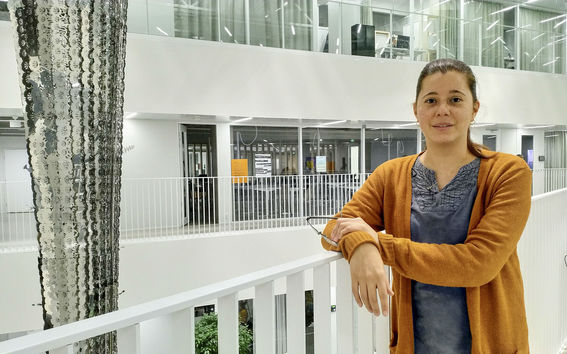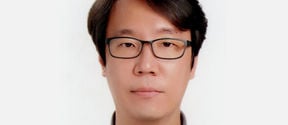What does it take to make peace?

Join Claudia Garduño Garcia, Olli Varis, Matti Nelimarkka, as well as CMI Chairman Alexander Stubb for their panel, Designing Peace, at Ahtisaari Days on 15 November at Dipoli. Learn more here.
‘I wanted to empower people to live the lives that they want through design,’ says Claudia Garduño Garcia.
It’s an ambitious but noble aim—to improve people’s lives and reduce inequalities. Yet that’s what Garduñoset out to do as she began her research career as a PhD student some six years ago. She wanted to find a new way of practicing design, shifting to collaborative practices that could make a real difference. And, so, the Aalto Lab Mexico Project was born.
Garduño, who is now a postdoctoral researcher, doesn’t look to just implement solutions, she asks what a better world means for the community, involving them in the process.
‘I wanted to know what a better world means for a very specific community, indigenous Mayans in the middle of the Yucatan peninsula,’ she says. This group, largely made up of farmers and artisans, experiences a high level of marginalization. ‘They’re conventionally poor yet they are very proud of their culture and way of living. So the work became about bridging the gaps to make their world better.’
Dialogue is what makes finding solutions possible for real-world issues, like the community’s lack of systemized health care. With two Mexican universities and a diverse team of students and experts, the Aalto-based group has worked to include community members throughout the course of the project.
‘We have different stakeholders coming together to collaborate and decide together—the best way is when users are not just interviewed, but part of the project itself,’ Garduñoexplains.
Bringing people together is something Matti Nelimarkka, a researcher in social computing, has also thought about. Connectivity has brought new ways to participate; we live in a world where time, place and status no longer hold the same meaning. Yet attention often goes to the negative aspects of online dialogue, like intense political polarization or hate speech.
Nelimarkka points out that technology is not the only one to blame. It’s also about how we use it.
‘Information and communication technologies can help communication between people and groups. It’s crucial to think about how we can develop meaningful interaction through these technologies,’ he says.
According to Nelimarkka, there are many examples of how technology and design can transform online communication for the better. Research has shown that when groups see how much time each person has put into a discussion, the whole discussion becomes more balanced and considerate. In the same vein, simple multiple-choice questions about the content of a news article can improve subsequent discussion in comment sections.
‘We need to think about what we want to achieve by people’s participation in public discussions. What kind of conversation—and with whom—do we want to support?,’ he asks. Clearly defining societal goals will help researchers and society address issues, like polarization, in smart ways.
While discussion and collaboration are one part in the quest for peace, Professor Olli Varis points to another, the environment.
‘Water is the lifeline of the planet’s ecosystems, and crucial to everybody’s everyday activities,’ Varis says. Environmental challenges affect the very basics of living, and often also business and livelihood opportunities.
‘This is prone to cause inequality and tensions between people,’ he explains.
Solving water issues—and, by extension, reducing possible tensions—is no simple feat. It has a technical dimension, which requires transferring technology and engineering education. Water management also has vast social, cultural and educational elements, which can vary enormously even within a single country. In this sense, water has local and global dimensions, and some in-between.
‘Globally water is among the key factors of climate change, environmental contamination and biodiversity loss. Insufficiently managed risks lead to massive threats to societies and ecosystems.’
Poor water management can lead to health issues and environmental contamination, both at the local and regional levels. Researchers, Varis says, can help to solve these issues by working to understand complex interactions—and by talking.
‘Researchers can enhance communication between the research community, policymakers and regular people. We can and should be active in bringing facts to societal debates and the media.’
More information on Ahtisaari Days on 15 November at Aalto University.
- Published:
- Updated:
Read more news

Min-Kyu Paek has been appointed Assistant Professor at the Department of Chemical and Metallurgical Engineering
Min-Kyu Paek has been appointed Assistant Professor at the Department of Chemical and Metallurgical Engineering
Camilla Hollanti elected as a member of Finnish Academy of Science and Letters
Camilla Hollanti leads a prominent research group on applications of algebra and number theory. The central topic of her research is to apply the methods of algebra and number theory to problems encountered in communication systems. Applications include wireless security and secure distributed computation.
Aalto ARTS alum Vidha Samya’s artwork featured at the Venice Biennale 2024
The Pavilion of Finland presents ‘The pleasures we choose’ at the 60th International Art Exhibition – La Biennale di Venezia until 24 November 2024.